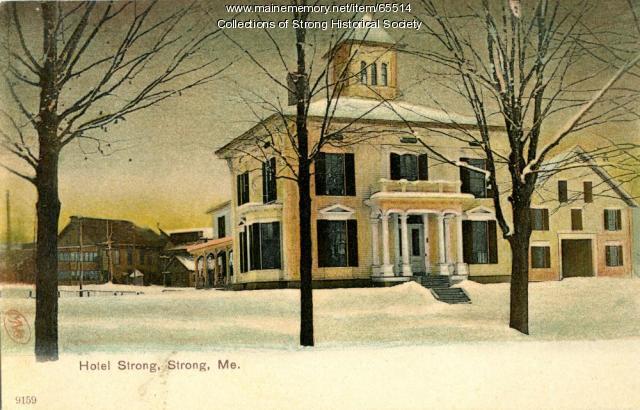Keywords: turnings
Item 67301
Wooden candle holders, Strong Wood Turning Corp., Strong, ca. 1955
Contributed by: Mr. & Mrs. Robert Pike through Strong Historical Society Date: circa 1955 Location: Strong Media: Lathe-turned wood
Item 67303
Salt & pepper shakers, Strong Wood Turning Corp., Strong, ca. 1955
Contributed by: Mr. & Mrs. Robert Pike through Strong Historical Society Date: circa 1955 Location: Strong Media: Lathe-turned wood
Item 151839
Butler residence planting zone plan, Frenchboro, 1984-2001
Contributed by: Maine Historical Society Date: 1984–2001 Location: Frenchboro Client: Gilbert Butler Architect: Patrick Chasse; Landscape Design Associates
Item 151718
Ricker house alterations, Poland, 1927-1929
Contributed by: Maine Historical Society Date: 1927–1929 Location: Poland Client: H. W. Ricker Architect: John Calvin Stevens and John Howard Stevens Architects
Exhibit
This collection of images portrays many buildings in Sanford and Springvale. The images were taken around the turn of the twentieth century.
Exhibit
Capturing Arts and Artists in the 1930s
Emmie Bailey Whitney of the Lewiston Journal Saturday Magazine and her husband, noted amateur photographer G. Herbert Whitney, captured in words and photographs the richness of Maine's arts scene during the Great Depression.
Site Page
Maine's Road to Statehood - Turn of the Century to the War of 1812
"Turn of the Century to the War of 1812 The 1800s welcomed a plethora of economic and demographic changes for the District of Maine."
Site Page
Strong, a Mussul Unsquit village - Wood Products of Strong
"Co., click here. Strong Wood Turning Corp. Strong Wood Turning Corp.Strong Historical Society Carroll H."
Story
Scientist Turned Artist Making Art Out of Trash
by Ian Trask
Bowdoin College alum returns to midcoast Maine to make environmentally conscious artwork
Story
How 20 years in the Navy turned me into an active volunteer
by Joy Asuncion
My service didn't end when I retired from the Navy
Lesson Plan
Longfellow Studies: Longfellow and the American Sonnet
Grade Level: 9-12
Content Area: English Language Arts, Social Studies
Traditionally the Petrarchan sonnet as used by Francesco Petrarch was a 14 line lyric poem using a pattern of hendecasyllables and a strict end-line rhyme scheme; the first twelve lines followed one pattern and the last two lines another. The last two lines were the "volta" or "turn" in the poem. When the sonnet came to the United States sometime after 1775, through the work of Colonel David Humphreys, Longfellow was one of the first to write widely in this form which he adapted to suit his tone. Since 1900 poets have modified and experimented with the traditional traits of the sonnet form.
Lesson Plan
Teddy Roosevelt, Millie, and the Elegant Ride Companion Curriculum
Grade Level: 3-5, 6-8
Content Area: Social Studies
These lesson plans were developed by Maine Historical Society for the Seashore Trolley Museum as a companion curriculum for the historical fiction YA novel "Teddy Roosevelt, Millie, and the Elegant Ride" by Jean. M. Flahive (2019). The novel tells the story of Millie Thayer, a young girl who dreams of leaving the family farm, working in the city, and fighting for women's suffrage. Millie's life begins to change when a "flying carpet" shows up in the form of an electric trolley that cuts across her farm and when a fortune-teller predicts that Millie's path will cross that of someone famous. Suddenly, Millie finds herself caught up in events that shake the nation, Maine, and her family. The lesson plans in this companion curriculum explore a variety of topics including the history of the trolley use in early 20th century Maine, farm and rural life at the turn of the century, the story of Theodore Roosevelt and his relationship with Maine, WWI, and the flu pandemic of 1918-1920.



















